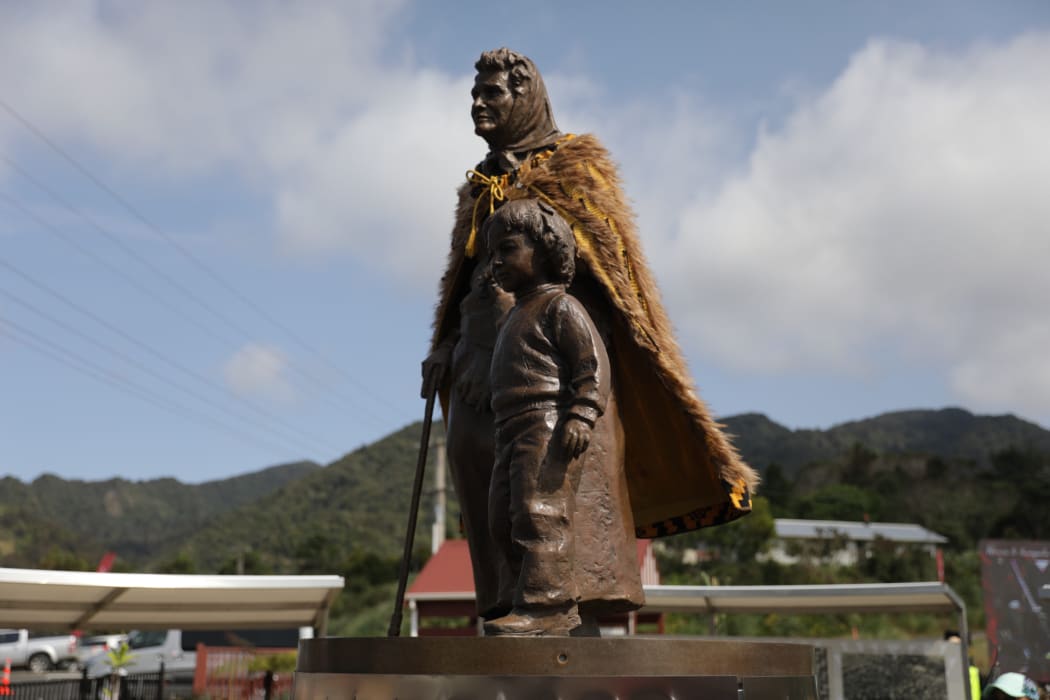
Captain John Hamilton is removed from the square Photo: RNZ / Andrew McRae
All around the world, people are discussing what to do with statues of historical figures with problematic legacies.
Leave them where they are? Put them in a museum? Tear them down, behead them, spit on them?
In today's episode of The Detail, Emile Donovan speaks to sociologist Joanna Kidman and historian Grant Morris about the nature of historical monuments, and how to respectfully commemorate the blood-stained past of colonised nations.
Hamilton City has removed a statue of British army captain John Hamilton from the centre of town after a formal request from Waikato-Tainui iwi. He was a regiment leader at the Battle of Gate Pā during the New Zealand wars, and locals believe he was responsible for a lot of the atrocities that happened to their people.
Captain James Cook statues have been vandalised in Gisborne and in other regions. Sir George Grey’s monument in Auckland was splattered with red paint.
Grant Morris, a senior lecturer at Victoria University, says statuary goes all the way back to ancient times, glorifying gods and real people. But the statues at issue here were built during a period of European dominance in the Victorian and Edwardian eras.
“If we do have statues today we tend to go for perhaps more abstract approaches, or perhaps more the memorial approach where it’s not a likeness of the person but some kind of other structure or sculpture remembering them,” he says.

Dame Whina Cooper's statue at the Waipuna Marae in Panguru. Photo: RNZ
There are hundreds of metal historical figures dotted around the country – not a huge amount per capita, but quite a few.
“There was definitely a golden age of putting up statues in New Zealand,” Morris says. New generations, the children of the original settlers, were asking who their founding fathers were that they wanted to memorialise.
The problem with that is those people weren’t the original settlers – but the cast iron went up anyway, the decisions made from a Pākehā world view.
Victoria University's Joanna Kidman says Māori memory is stored in waiata, whakairo and pepeha. It comes across in whaikōrero, “the tribal archive looks a little bit different to a bronze statue on a granite plinth,” she says.
“I think it’s important that we teach thinking critically about the past at school so there’s an awareness that the violence that was glorified and justified and celebrated at the time is something that never happens again. So I think that’s about creating an educated society in New Zealand where we can talk about the complexities of history without descending into slanging matches.”
But “for some groups the trauma, the grief and the anger, it is ongoing,” she says. “And people want those statues removed. And that’s an entirely valid response. Other groups within Māoridom are very keen for those statues to remain, but what they want is to have more context around them.
“There is no central committee that is handing down directives about how we think about the past.”


